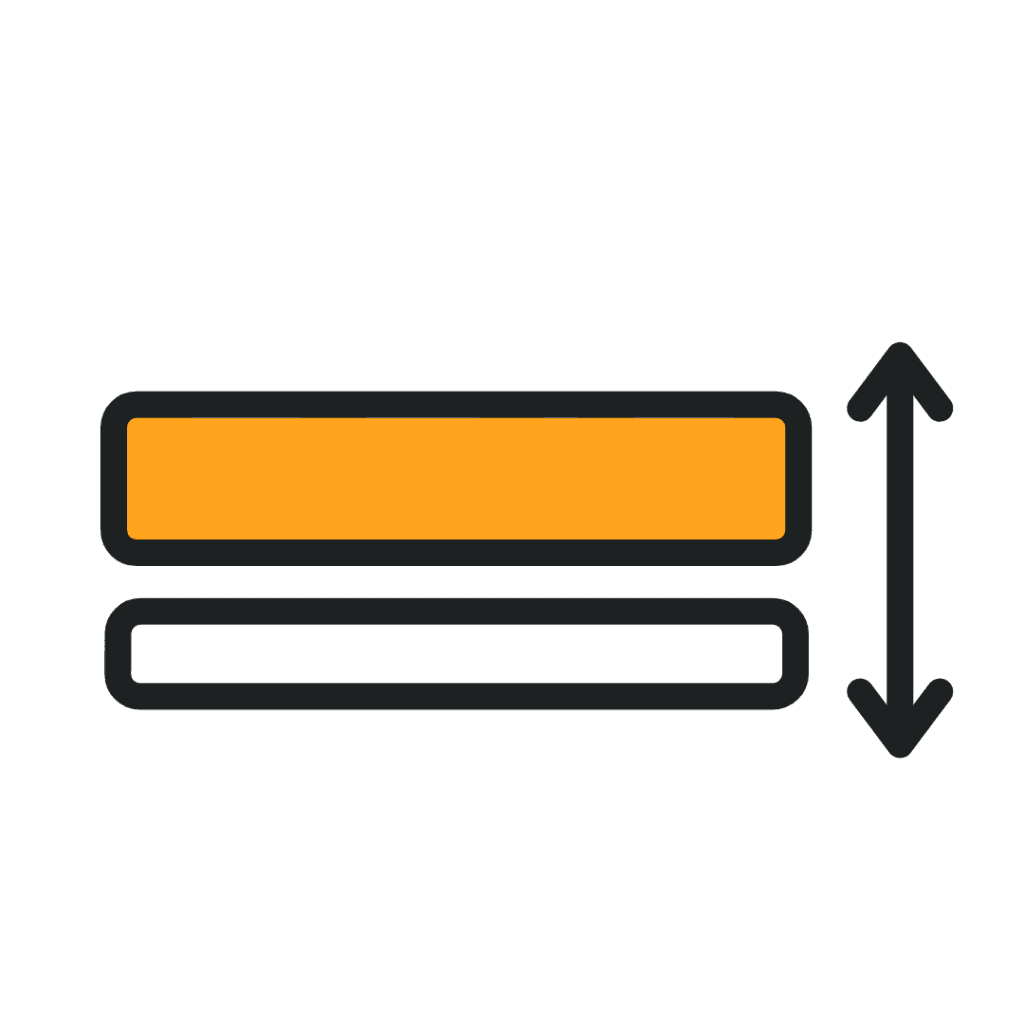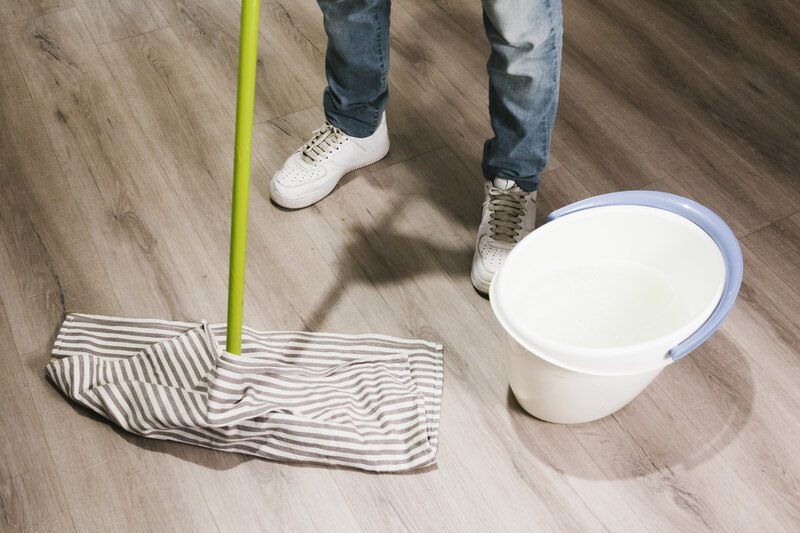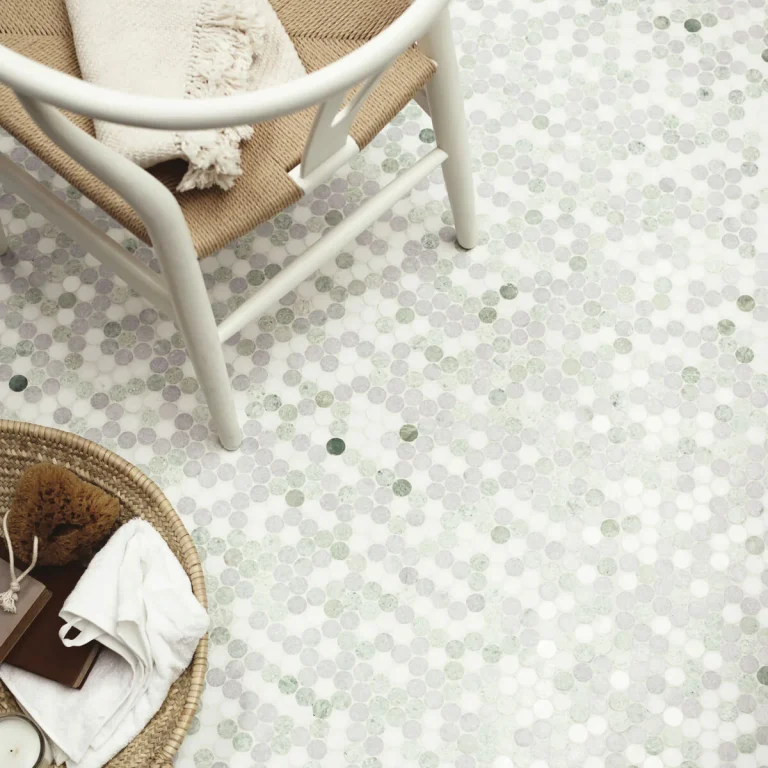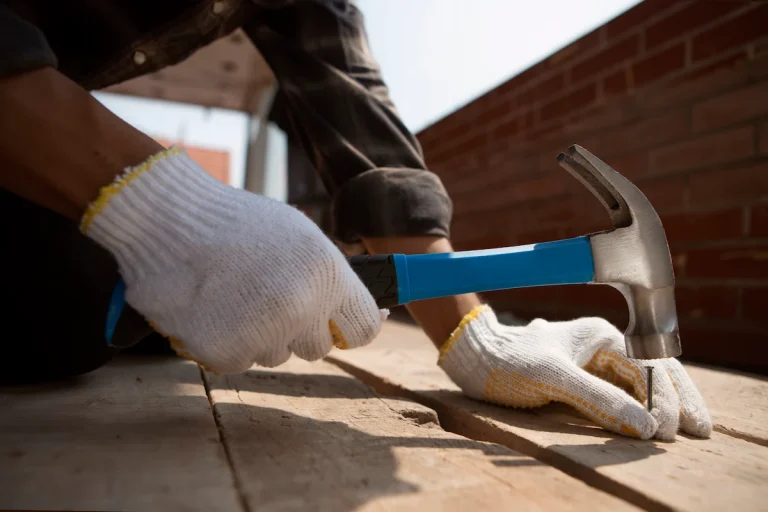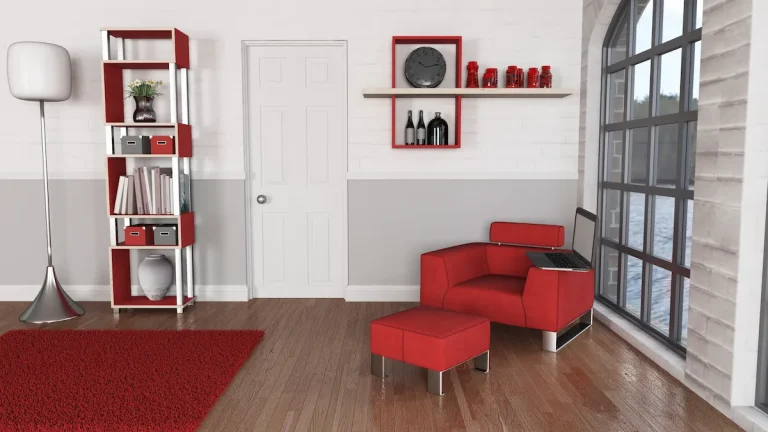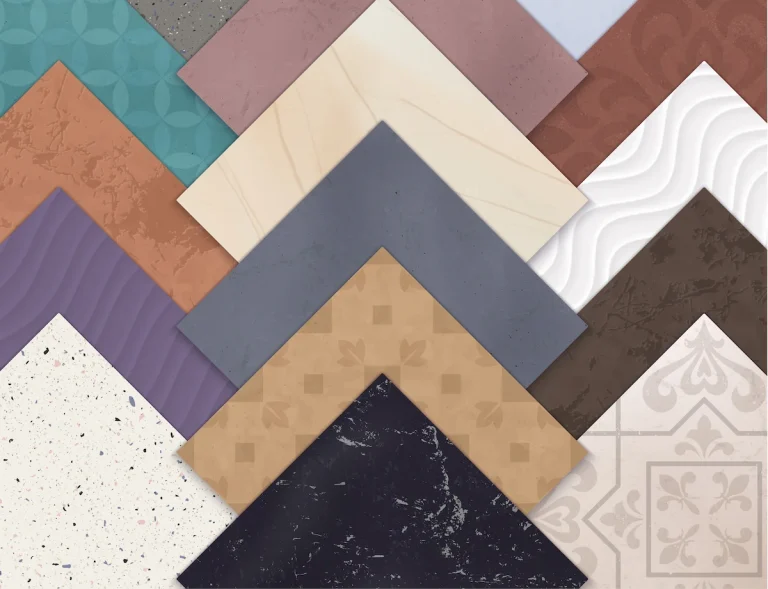Looking for the best ways to clean and maintain LVT flooring without causing any damage? This article covers everything you need to know about how to clean LVT flooring effectively and safely, from regular sweeping to removing tough stains.
Discover the dos and don’ts of cleaning, how to remove stubborn stains, and common mistakes to avoid to keep your LVT flooring looking its best with expert tips and guidance.
What Is LVT Flooring?
Luxury vinyl tiles (LVT flooring) are a high-quality, durable option that mimics the look of natural materials like hardwood or stone, offering a versatile and stylish solution for various spaces in your home or office.
One of the key advantages of LVT flooring is its exceptional durability, making it a practical choice for high-traffic areas. Whether you have pets, children, or simply a lot of foot traffic, LVT can withstand daily wear and tear without losing its charm.
The aesthetic appeal of LVT flooring is unmatched – you can achieve the luxurious appearance of hardwood or the sophisticated look of stone at a fraction of the cost, making it a budget-friendly yet elegant choice.
Its water-resistant properties make LVT ideal for bathrooms, kitchens, and other moisture-prone areas where traditional hardwood m
ay not be suitable. The easy installation process and low maintenance requirements of LVT add to its appeal, saving you time and money in the long run.

See product: Floorify Big Tiles Coquille
Why Is It Important to Clean LVT Flooring?
Regular cleaning and maintenance of LVT flooring are essential to preserve its appearance, enhance its longevity, and maintain its scratch-resistant properties.
By incorporating a routine cleaning schedule, you can prevent dirt and debris from accumulating on the surface, ensuring that the flooring retains its original beauty. Consistent care also helps in protecting the wear layer of the LVT, thus increasing its resistance to scratches and marks over time.
Utilising the right cleaning products and techniques tailored to LVT floors can prevent any damage that might occur from incorrect maintenance practices. Proper maintenance not only safeguards the flooring’s aesthetics but also contributes to its overall durability and resilience.
How to Clean LVT Flooring
Cleaning LVT flooring effectively involves a combination of sweeping, hoovering, and mopping with a mild detergent solution to remove dust, dirt, and stains without causing damage.
1. Regular Sweeping and Vacuuming
Regular sweeping and hoovering are crucial for removing debris and preventing build-up that can scratch or damage LVT flooring.
Avoiding the accumulation of dirt and grit on the surface of LVT flooring is essential for maintaining its appearance and extending its lifespan. Sweeping should be done daily or as often as necessary, especially in high-traffic areas.
Regarding hoovering, using a soft brush attachment is recommended to prevent any scratching. For a deeper clean, damp mopping with a pH-neutral cleaner can help remove stubborn stains and dirt particles. Investing in a microfibre mop can also be beneficial for efficiently cleaning LVT flooring without leaving residue behind.
2. Mopping with Mild Detergent Solution
Mopping LVT flooring with a mild detergent solution helps to clean the surface without leaving any harmful residue.
Before beginning the mopping process, it’s essential to prepare the detergent solution by mixing the appropriate amount of detergent in water. The solution should be well-diluted to prevent any streaks or residue on the LVT flooring.
Regarding choosing the right mop, a microfiber or sponge mop is ideal for LVT flooring as it is gentle yet effective in picking up dirt and grime. Avoid using string or rope mops that may leave excess water on the floor.
To ensure the floor is not overly wet after mopping, wring out the mop thoroughly to remove any excess water before mopping. This helps prevent any potential damage to the LVT flooring and promotes a quicker drying time.
3. Using a Neutral pH Cleaner
Using a neutral pH cleaner on LVT flooring is recommended to effectively clean the surface whilst protecting the integrity of the material.
Choosing the right neutral pH cleaner is crucial to ensure that it effectively removes dirt, grime, and stains without causing any damage to the flooring. Look for products specifically designed for LVT or multi-surface cleaning. Neutral pH cleaners are gentle yet powerful, making them safe for regular use without leaving residue or dulling the surface.
To apply the cleaner, dilute it according to the manufacturer’s instructions. Use a mop or microfibre cloth to spread the solution evenly across the floor, working in small sections for thorough cleaning. Avoid using excessive water or harsh chemicals that can harm the LVT flooring over time.
The Dos and Don’ts of Cleaning LVT Flooring
Following certain dos and don’ts is the best way to clean LVT flooring to ensure the surface remains in optimal condition and is not damaged by improper cleaning methods.
1. Use a soft-bristled brush
Using a soft-bristled brush is recommended for gently cleaning LVT flooring without scratching the surface.
Soft-bristled brushes provide a gentle yet effective way to remove dirt and debris from the surface of the flooring. Their flexible bristles are less likely to cause damage compared to harder brushes, ensuring the longevity of your flooring. When using a soft-bristled brush, it’s important to apply gentle pressure and use sweeping motions to avoid any potential harm. This technique not only cleans the flooring effectively but also helps to maintain its original appearance and finish.
2. Do Use a Microfiber Cloth
A microfibre cloth is ideal for picking up dust and residue from LVT flooring without leaving streaks or fluff.
The tiny fibres in a microfibre cloth are much more effective at trapping dirt and particles compared to traditional cleaning cloths. When using a microfibre cloth on LVT flooring, it is recommended to lightly dampen it with water or a mild cleaning solution to maximise its cleaning capabilities.
Unlike cotton or kitchen roll, microfibre cloths are reusable, durable, and eco-friendly. They are also versatile and can be used dry for dusting or wet for deep cleaning without the need for harsh chemicals.
3. Don’t Use Harsh Chemicals
Avoid using harsh chemicals on LVT flooring as they can cause damage to the surface and reduce its longevity.
Common harsh chemicals to steer clear of when cleaning LVT floors include bleach, ammonia, and acidic cleaners. These substances can lead to discolouration, etching, and even peeling of the flooring. When exposed to these chemicals, the protective layer of the LVT may deteriorate, making it more prone to scratches and stains.
Opt for gentler alternatives such as warm water with a mild soap solution or a vinegar and water mixture for everyday cleaning. These are effective in removing dirt without compromising the integrity of the flooring.
For tougher stains, consider using a specialised LVT cleaner that is formulated to be gentle on the surface while still providing a deep clean.
4. Don’t Use Abrasive Tools
Using abrasive tools on LVT flooring can create scratches and damage the protective finish of the tiles.
It is crucial to understand the risks associated with using abrasive tools, as they can cause irreparable harm to the surface of the flooring. For instance, harsh scrubbing pads, steel wool, or stiff-bristled brushes should be avoided at all costs on LVT flooring, as they can leave visible marks and weaken the protective layer.
The best product to clean LVT flooring is gentle cleaning options like microfibre cloths, soft sponges, or mops with non-abrasive pads. These alternatives can effectively remove dirt and stains from tough spots without compromising the integrity of the flooring.
How to Remove Tough Stains from LVT Flooring
Removing tough stains from LVT flooring often requires specific techniques and products like vinegar, bicarbonate of soda, and WD-40 to effectively clean without damaging the surface.
1. Spills and Stains
Address spills and stains on LVT flooring immediately to prevent them from setting and becoming harder to remove.
Regarding dealing with spills and stains on LVT flooring, swift action is key. The longer a spill sits, the more likely it is to seep into the material, making it tougher to clean. There are specific methods to follow to effectively clean different types of stains. For organic stains like food and beverages, blot the area first with a clean cloth to absorb as much liquid as possible. For tougher stains like ink or oil, a gentle cleaning solution may be necessary.
Utilising the right tools and products is crucial in maintaining the integrity of LVT flooring. Microfibre cloths are excellent for wiping up spills without causing damage, while mild detergents and specialised LVT cleaners can effectively remove stains without harming the flooring’s surface. It’s important to read the manufacturer’s instructions and warranties to ensure that the cleaning products used are safe for your specific type of LVT flooring.
2. Grease and Oil
Effective removal of grease and oil from LVT flooring involves using a suitable degreaser to break down the oily residue without harming the floor.
Regarding degreasers for LVT flooring, it’s crucial to choose one that is safe to use on this type of surface. Look for degreasers specifically formulated for vinyl flooring to ensure compatibility and effectiveness. These degreasers are typically mild yet powerful enough to tackle tough grease and oil stains without causing any damage to your LVT flooring.
The cleaning process for grease and oil stains on LVT flooring usually involves applying the degreaser directly to the affected area and allowing it to sit for a few minutes to penetrate the grease. Afterwards, gently scrub the area with a soft-bristled brush or mop to lift the loosened residue. Wipe the area clean with a damp cloth or mop to remove any remaining degreaser and residue.
To prevent future grease and oil stains on your LVT flooring, consider taking proactive measures such as placing mats at entryways to trap dirt and oil before they reach the floor surface. Regularly sweeping or vacuuming the floor to remove dirt and debris can also help prevent the buildup of greasy residues that can lead to stains. Wiping up spills and splatters promptly can prevent them from seeping into the flooring and causing stubborn stains.
3. Ink and Permanent Marker
Removing ink and permanent marker stains from LVT flooring can be achieved by using products like WD-40, which is applied carefully to lift the stain without spreading it.
Another effective technique to tackle stubborn ink stains on LVT flooring is to create a paste using baking soda and water, gently scrubbing the affected area with a soft cloth. For more delicate cleaning, rubbing alcohol can also be used to dissolve the ink. When dealing with permanent marker stains, a mixture of white vinegar and lemon juice can work wonders, breaking down the pigments. Always remember to test any cleaning solution on a hidden spot of the flooring to prevent damage.
To ensure thorough cleaning, wipe away excess product with a damp cloth after lifting the stain, then dry the area to prevent any leftover residue. Consider using a mild detergent solution to clean the spot further and remove any remaining traces of the stain. Proper ventilation is crucial while cleaning, especially when using strong chemicals, to maintain a safe environment.
How to Maintain LVT Flooring
Maintaining LVT flooring involves taking preventive measures such as using furniture pads, promptly cleaning up spills, and following a regular care routine to ensure its longevity and appearance.
1. Use Furniture Pads
Using furniture pads under heavy furniture helps to prevent scratches and protect the surface of LVT flooring.
There are various types of furniture pads available to suit different needs, including felt pads, rubber pads, and plastic glide pads. Felt pads are ideal for wooden floors as they are gentle and do not leave marks. Rubber pads provide a good grip and prevent sliding. Plastic glide pads work well on carpets and rugs.
To apply furniture pads, simply clean the bottom of the furniture legs, peel off the backing of the pad, and press firmly onto the leg. These pads not only safeguard the flooring from damage but also reduce noise when moving furniture around.
2. Avoid Walking on LVT Flooring with Shoes
Avoiding walking on LVT flooring with shoes can help to reduce dirt buildup and prevent potential damage from abrasive particles.
Implementing a no-shoes policy in your home or office not only maintains a cleaner and more pristine environment but also ensures the longevity of your floors. By asking guests and family members to leave their shoes at the door, you significantly decrease the amount of dirt, debris, and bacteria that are tracked indoors. This simple practice can save you time on cleaning and extend the vibrancy of your flooring, ultimately reducing the need for costly maintenance or replacement.
3. Clean up Spills Immediately
Cleaning up spills immediately on LVT flooring is crucial to prevent staining and protect the integrity of the surface.
When dealing with spills on LVT flooring, a swift response is key to avoiding permanent damage. The first step is to blot the spill with a clean cloth or kitchen roll, absorbing as much liquid as possible.
Next, prepare a solution of gentle cleaning detergent and warm water. Use this solution to gently scrub the affected area, being careful not to spread the spill further.
Once the spill is removed, thoroughly rinse the area with clean water and dry it completely to prevent any residual moisture from seeping into the flooring.
How to Clean LVT Flooring: The Common Mistakes to Avoid
Avoiding common mistakes when cleaning LVT flooring, such as using too much water, harsh chemicals, and neglecting regular cleaning, is essential to maintain its quality and appearance.
1. Using Too Much Water
Using too much water when cleaning LVT flooring can lead to moisture damage and compromise the integrity of the tiles.
Excessive water on LVT flooring can seep into the seams, causing warping and swelling of the tiles over time. To prevent this, it is crucial to control the amount of water used during cleaning. One effective method is to wring out the mop thoroughly before use to avoid drenching the floor. Consider using a spray bottle to lightly mist the floor with water and a cleaner solution instead of pouring water directly onto the surface.
2. Not Sweeping or Vacuuming Regularly
Failing to sweep or vacuum regularly can lead to debris buildup that scratches and dulls the surface of LVT flooring.
Regular sweeping and vacuuming play a vital role in maintaining the appearance and longevity of your LVT flooring. By removing dirt, dust, and other debris promptly, you can prevent them from accumulating and causing damage over time. Neglecting this routine not only affects the aesthetics of your flooring but also compromises its durability. Overlooking debris removal may result in deep scratches, discolouration, and even permanent stains, diminishing the overall appeal of your space. Consistent maintenance is key to preserving the beauty and integrity of your LVT floors.
3. Using Harsh Chemicals
Using strong chemicals on LVT flooring can cause discolouration, damage the protective finish, and reduce the floor’s lifespan.
Common strong chemicals to avoid when cleaning LVT flooring include ammonia, bleach, and vinegar. Ammonia can strip away the protective coating, leaving the floor vulnerable to scratches and dents. Bleach, on the other hand, can cause discolouration and weaken the flooring material over time. Vinegar’s acidic nature can react negatively with the surface, leading to etching and dullness.
A safer alternative for cleaning LVT flooring is to use mild soap or a pH-neutral cleaner diluted in warm water. These gentle solutions effectively remove dirt and grime without causing harm to the flooring. Microfibre mops or soft bristle brushes are ideal tools to use during cleaning to prevent scratches.
Essentially, with proper care, LVT flooring can prove to be both durable and long-lasting. Therefore, there’s no reason to hesitate in selecting vinyl flooring for your home. It provides exceptional durability, functionality, and an attractive aesthetic to enhance your living space.
At TEKA Flooring, a wide array of vinyl flooring options awaits you. Whether you prefer tones in brown, natural hues, or lighter shades, TEKA Flooring has them all. Feeling unsure about which design would best complement your space? Don’t worry, just consult with us! We’re here to help you make the perfect choice.
Read Also:



















